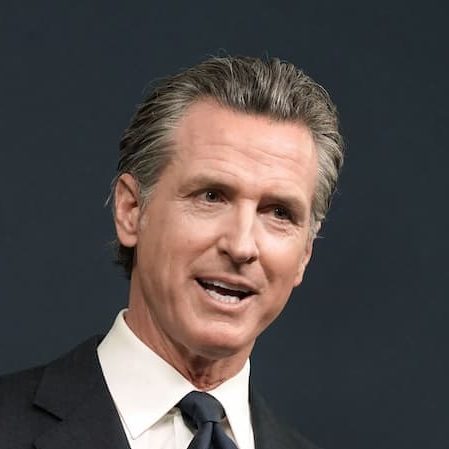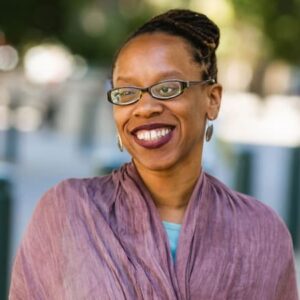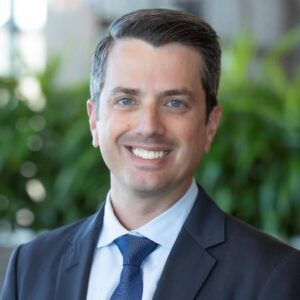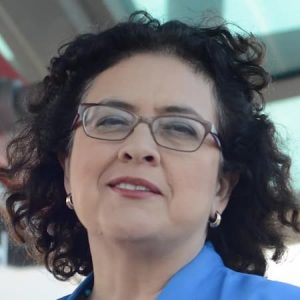This article will answer every question you have about Gavin Newsom. Below are some of the frequently asked questions about him.
- What does Newsom do for a living?
- Who are Newsom’s parents and siblings?
- What are Newsom’s interests and hobbies?
- Is Newsom married or does he have a girlfriend/boyfriend?
- Does Newsom have any children?
- Where is Newsom now?
- How tall is Newsom?
- How much money does Newsom earn?
- What is Newsom’s net worth?
N/B: Please read the entire post to have all your questions answered.
Who is Gavin Newsom?
Gavin Christopher Newsom is a well-known American politician and businessman who has been the 40th governor of California since 2019. Being a member of the Democratic Party, from 2011 to 2019, he served as the 49th lieutenant governor of California and the 42nd mayor of San Francisco from 2004 to 2011. After graduating from University, he founded the PlumpJack wine store with billionaire heir and family friend, Gordon Getty as an investor. The PlumpJack Group grew to manage 23 businesses. These include wineries, restaurants, and hotels.
In 1996, he began his political career when San Francisco mayor Willie Brown appointed him to the city’s Parking and Traffic Commission. Brown then appointed Newsom to fill a vacancy on the Board of Supervisors the next year and was elected to the board in 1998, 2000, and 2002. At the age of 36 in 2003, he was elected as the 42nd mayor of San Francisco, the city’s youngest in a century. In 2007, he was reelected with 27% of the vote.
In 2010, he was elected lieutenant governor of California and reelected in 2014. He was then elected governor in the 2018 election. He faced criticism because of his personal behavior and leadership during the COVID-19 pandemic, which was followed by an attempt to recall him from office. In the 2021 recall election, he prevailed “emphatically beating” what he labeled the Republican effort to remove him. In the 2022 election, he was elected to a second term. From 2012 to 2013, he hosted The Gavin Newsom Show on Current TV and wrote the 2013 book Citizenville, about using digital tools for democratic change.
How Old Is Gavin Newsom?
He is 55 years old as of November 2022, having been born on October 10, 1967, in San Francisco, California, U.S. Newsom shares his birthdate with celebrities such as; Pressley Hosbach, DDG, Fundy, Thomas Kuc, David Lee Roth, and many more.
Gavin Newsom Family
Who are Gavin Newsom’s Parents?
He was born to William Newson (Father, born on February 15, 1934, but died on December 12, 2018) was an American state appeals court judge and administrator of the Getty family trust. And Tessa Menzies (Mother, died in May 2002).

Does Gavin Newsom have Siblings?
He has a younger sister by the name of Hilary Newsom Callan.
Gavin Newsom Education
He received his high school education at Redwood High School where he graduated in 1985. While in high school, he was a shooting guard in basketball and an outfield in baseball. After graduating from high school, he attended Santa Clara University. Where he graduated in 1989 with a Bachelor of Science in political science.
Gavin Newsom’s Marital Status
He is married to the love of his life Jennifer Siebel Newson (born on June 19, 1974) an American documentary filmmaker and actress. They married in July 2008, in Stevensville, Montana. However, he was previously married to Kimberly Guilfoyle (born on March 9, 1969). An American television news personality and the former prosecuting attorney in San Francisco. They married in December 2001, at Saint Ignatius Catholic Church but divorced on February 28, 2006.
Gavin Newsom Kids
He has four kids with his wife Jennifer by the name Hunter Siebel Newsome (born in 2011), Brooklyn Siebel Newsom (born in 2013), Dutch William Siebel Newsom (born in 2016), and Montana Tessa Siebel Newsom (born in 2009).
Gavin Newsom Business Career
On May 14, 1991, he and his investors created the company PlumpJack Associates L.P. The group started PlumpJack Winery in 1992 with the financial help of his family friend Gordon Getty. The business has grown to an enterprise with more than 700 employees. . The PlumpJack Cafe Partners L.P opened the PlumpJack Cafe, in 1993. Between 1993 and 2000, he and his investors opened several businesses that included the PlumpJack Squaw Valley Inn with a PlumpJack Cafe (1994), a winery in Napa Valley (1995), the Balboa Cafe Bar and Grill (1995).
The PlumpJack Development Fund L.P.(1996), the MatrixFillmore Bar (1998), the PlumpJack Wines shop Noe Valley branch (1999), PlumpJackSport retail clothing (2000), and a second Balboa Café at Squaw Valley (2000). Moreover, his investments include five restaurants and two retail clothing stores. In 2004, he sold his share of his San Francisco businesses when he became mayor. But has maintained his ownership in the PlumpJack companies outside San Francisco. These include; the PlumpJack Winery in Oakville, California, the new PlumpJack-owned Cade Winery in Angwin, California, and the PlumpJack Squaw Valley Inn. Moreover, he is the president in absentia of Airelle Wines Inc., which is connected to the PlumpJack Winery in Napa County.
An Early Political Career
His first political experience came in 1995 when he volunteered for Willie Brown’s successful campaign for mayor. In 1996, Brown appointed News, to a vacant seat on the Parking and Traffic Commission and he was later elected president of the commission. The following year, Brown appointed him to the San Francisco Board of Supervisors a seat vacated by Kevin Shelley. At the time, he was the youngest member of San Francisco’s board of supervisors. He was sworn in by his father and pledged to bring business experience to the board. In 1998, he was elected to a full four-year term on the board.
He was then reelected in 2000 and 2002 to represent the second district, which includes Pacific Heights, the Marina, Cow Hollow, Sea Cliff, and Laurel Heights. He gained attention as a San Francisco Supervisor because of his role in advocating reform of the city’s municipal law (Muni). Moreover, he was one of two supervisors endorsed by Rescue Muni, a transit riders group in his 1998 reelection. Also, he supported allowing restaurants to serve alcohol at their outdoor tables and banning tobacco advertisements visible from the streets. During his time as supervisor, he supported housing projects through public-private partnerships. This was to increase homeownership and affordable housing in San Francisco.
Gavin Newsom Career as Mayor of San Francisco (2004 to 2011)
Elections (2003)
In the November 3, 2003, general election, he placed first in a nine-person field. He thus received 41.9% of the vote to Green Party candidate Matt Gonzalez’s 19.6% in the first round of balloting. However, in the December runoff, he faced a closer race when many of the city’s progressive groups supported Gonzalez. Newsom went on to win the runoff with 53% of the vote to Gonzalez’s 47% a margin of 11,000 votes. On January 3, 2004, he was sworn in as mayor.
2007
San Francisco’s progressive community tried to field a candidate to run a strong campaign against Newsom. And thus supervisors Ross Mirkarimi and Chris Daly considered running but both declined. Gonzalez also decided not to challenge Newsom again. Newsom was thus challenged in the election by 13 candidates, including; George Davis, a nudist activist, and Michale Powers, owner of the Power Exchange sex club. However, Tony Hall (Conservative former supervisor) withdrew by early September due to a lack of support. The San Francisco Chronicle declared in August 2007 that Newsom faced a serious threat to his reelection bid. On November 6, he was reelected with over 72% of the vote. Upon taking office for a second term, he promised to focus on the environment, homelessness, healthcare, education, housing, and rebuilding San Francisco General Hospital.
Mayoralty
As mayor, he focused on development projects in Hunters Point and Treasure Island. In 2004, he gained national attention when he directed the San Francisco city-county clerk o issue marriage licenses to same-sex couples, thus violating the state law passed in 2000. Other programs he initiated include’ to end chronic homelessness included the San Francisco Homeless Outreach Team (SF HOT) and Project Homeless Connect (PHC).
During a strike by hotel workers against a dozen San Francisco hotels, on October 27, 2004, he joined UNITE HERE union members on a picket line in front of the Westin St. Francis Hotel. There, he vowed that the city would boycott the hotels by not sponsoring city events at them until they agreed to a contract with workers. In September 2006, the contract dispute was fully settled. In 2005, he pushed for a state law to allow California communities to create policies restricting certain breeds of dogs. He then signed the law establishing Healthy San Francisco in 2007. This was to provide city residents with universal health care, the first city in the nation to do so. In 2009, he came under attack from the San Francisco Democratic Party because of his failure to implement the City of San Francisco’s sanctuary city rule.
Continuation
That same year, he along with Mayor Bloomberg of New York and three other public officials, received the Leadership for Healthy Communities Award. This was because of his commitment to making healthful food and physical activity options more accessible to children and families. In 2008, he hosted the Urban-Rural Roundtable to explore ways to promote regional food development and increased access to healthy, affordable food. In 2010, he was named “America’s Most Social Mayor” by Same Point. This was based on an analysis of the social media profiles of mayors of the 100 largest U.C. cities.
Same-Sex Marriage
In 2004, he gained national attention when he directed the San Francisco city-county clerk to issue marriage licenses to same-sex couples, a violation of the law. The Supreme Court of California in August 2004, annulled the marriages Newsom had authorized as they conflicted with state law. Still, his unexpected move brought national attention to the issue of same-sex marriage, solidifying political support for him in San Francisco and in the LGBTQ+ community. During the 2008 election, he opposed Proposition 8, the ballot initiative to reverse the Supreme Court of California ruling that there was a constitutional right to same-sex marriage.
Gavin Newsom Career as Lieutenant Governor of California (2011 to 2019)
Elections (2010)
He announced in April 2009, his candidacy for governor of California in the 2010 election. In September 2009, he received the endorsement of former President Bill Clinton. However, in October 2009, he dropped out of the race for governor. In February 2010, he filed initial paperwork to run for lieutenant governor and officially announced in March his candidacy. He went on to receive the Democratic nomination in June and won the election on November 2, 2010. On January 10, 2011, he was sworn in as lieutenant governor and served under Governor Jerry Brown. The one-week delay was to ensure that a successor as mayor of San Francisco was chosen before he left office. In May 2012, he debuted on Current TV as the host of The Gavin Newson Show.
2014
On November 4, 2014, he was reelected as lieutenant governor by defeating Republican Ron Nehring with 57.2% of the vote. His second term then began on January 5, 2015.
Capital Punishment
In 2012, he supported a failed measure that sought to end capital punishment in California. He claimed that the initiative would save California millions of dollars, citing statistics that California had spent $5 billion since1978 to execute just 13 people. In 2016, he supported Proposition 62 which would also have repealed the death penalty in California.
Criminal Justice and Cannabis Legalization
He was the only statewide politician in 2014 to endorse California Proposition 27. This is legislation that recategorized certain nonviolent offenses like drug and property crimes as misdemeanors as opposed to felonies. On November 4, 2014, voters passed the measure. The following year in June, he released the Blue Ribbon Commission on Marijuana Policy’s final report which he had convened with the American Civil Liberties Union of California in 2013.
Education
In a November 2015 op-ed, Newsom joined Long Beach City College Superintendent Eloy Oakley calling for the creation of the California College Promise. This would create partnerships between public schools, public universities, and employers and offer a free community college education. Throughout 2016, he joined Oakland mayor Libby Schaaf at the launch of the Oakland Promise and Second Lady Jill Biden and Los Angeles mayor Eric Garcetti at the launch of the LA Promise. In December 2015, he called on the University of California to reclassify computer science as a core academic class to incentivize more high schools to offer computer science curricula. The next year, he passed a series of reforms at the University of California to give student-0athletes additional academic and injury-related support. Also, te ensures that contracts for athletic directors and coaches emphasized academic progress.
Gavin Newsom Career as Governor of California (2019 to Present)
Elections (2018)
He announced on February 11, 2015, that he was opening a campaign account for governor in the 2018 elections. This would allow him to raise funds for a campaign to succeed Brown as governor of California. On June 5, 2018, he finished in the top two in the nonpartisan blanket primary and went on to defeat Republican John H. Cox by a landslide in the November 6 general election. On January 7, 2019, he was sworn in.
2021 Recall
Early on in his tenure, several recall attempts were launched against Newsom but they failed to gain much attention. On February 21, 2020, a recall petition was introduced by Orrin Heatlie, a deputy sheriff in Yolo County. The petition named Nwesom’s sanctuary state policy and said laws he endorsed favored “foreign nationals, in our country illegally”. Also, he said that California had high homelessness, high taxes, and low quality of life and described other grievances.
On June 10, 2020, the California secretary of state approved it for circulation. This forced the gubernatorial recall election to require a total of 1,495,709 verified signatures. Initially, the signature was given a signature deadline of November 17, 2020, but it was extended on March 17, 2021, after Judge James P. Arguelles ruled that petitioners could have more time because of the pandemic. However, the Associated Press announced on September 14, 2021, the failure of the recall election to obtain the majority votes required to remove Newsom.
2022
He was elected to a second term in 2022, by defeating Republican state senator Brian Dahle.
Appointments
After U.S. Sentair Kamala Harris was elected vice president of the United States in the 2020 presidential election. Newsom went on and appointed Secretary of State of California Alex Padilla to succeed her as California’s junior U.S. senator. To replace Padilla as secretary of state, Newsom appointed Assemblywoman Shirley Weber. He went on to appoint Rob Bonta Attorney General of California.
Criminal Justice
Capital Punishment
Three years after voters narrowly rejected this repeal, on March 13, 2019, he declared a moratorium on the state’s death penalty, preventing any execution in the state as long as he remained governor. Also, the move led to the withdrawal of the state’s current lethal injection protocol and the execution chamber’s closure at San Quentin State Prison. In January 2022, he directed the state to begin dismantling its death row in San Quentin, to be transformed into a “space for rehabilitation programs”. In 2012 and 2016, the state’s voters upheld capital punishment with the latter measure aging to move the condemned to other prisons.
Police Reform
He has spoken in favor of Assembly Bill 1196 which would ban carotid artery restraints and choke holds in California. He has claimed that there is no longer a place for a policing tactic. In September 2021, he signed legislation raising the minimum age to become a police officer from 18 to 21.
Transgender Prisoners
He signed into law a bill in September 2020, allowing California transgender inmates to be placed in prisons that correspond with their gender identity.
Disasters and Emergencies
COVID-19 pandemic
On November 4, 2020, he declared a state of emergency after the first death in California attributable to the novel SARS-coV-2 coronavirus disease (COVID-19). He stated that his intention was to help California prepare for and contain COVID-19’s spread. Also, he announced mitigation policies for the state’s estimated 108,000 unsheltered homeless people who would be prioritized with a significant push to move them indoors. He went on to issue an executive order that allowed the state to commander hotels and medical facilities to treat COVID-19 patients and permitted government officials to hold teleconferences in private without violating open meeting, laws.
As the number of COVID-19 cases in the state continued to rise. Newsom urged people 65 and older and those with chronic health conditions to isolate themselves from others starting from March 15. On March 19, his statewide order to start at home became mandatory. It also allowed movement outside the home for necessities or recreation, but people were required to maintain a safe distance apart. He along with governors of Oregon and Washington announced on April 28, a “shared approach” for reopening their economies. In early May, he announced that certain retailers could reopen for pickup.
That same month, he announced a plan for registered voters to have the option to vote by mail in the November election. In January 2021, the vaccination rate began increasing with over half the population fully vaccinated as of September 2021, the percentage ranking #16 out of the 150 states. However, despite his administration enacting some of the country’s toughest pandemic restrictions. By May 2021, California had the 29th-highest death rate out of all 50 states.
Pandemic Unemployment Fraud and Debt
The Los Angeles Times reported in January 2021, that Newsom’s administration had mismanaged $11.4 billion by disbursing unemployment benefits to ineligible claimants. Another $19 billion in claims remain under investigation for fraud. By the summer of 2021, according to The Sacramento Bee, California owed over $23 billion to the federal government for unemployment benefits paid out during the pandemic.
Energy and Environment
He vetoed SB 1 in September 2019, which would have preserved environmental protections. At the state level that was set to roll back nationally under the Trump administration’s environmental policy. The following year in February, his administration sued federal agencies over the rollbacks to protect imperiled fish in the Sacramento-San Joaquin River Delta in 2019. On September 23, 2020, he signed an executive order to phase out the sale of gasoline-powered vehicles and require all new passenger vehicles sold in the state to be zero-emission by 2025.
During his 2018 campaign, he pledged to tighten the state’s oversight of fracking and oil extraction. His administration then approved new oil and gas leases on public lands early in his governorship at about twice the rate of the prior year. In November 2019, he imposed a moratorium on the approval of new hydraulic fracturing. And stream-injected oil drilling in the state until the state permits those projects could be reviewed by an independent panel of scientists. In April 2020, state agencies resumed issuing new hydraulic fracturing permits. The Center for Biological Diversity sued the Newsom administration in 2021. Over the continued sale of oil and gas leases and Consumer Watchdog called for the end of their sale.
Executive Authority and Actions
Overall, he has vetoed legislation at a rate comparable to that of his predecessors. He then vetoed 12.7% of the bills passed by the legislature on average from 2019 to 2021. But the rate declined over the course of the three legislative sessions. During the 2020 legislative session, he used a larger-than-normal number of executive orders.
Gun Control
In 2016 as lieutenant governor, he was the official proponent of Proposition 63. In response to the 2019 mass shooting in Virginia Beach, he called for nationwide background checks on people purchasing ammunition. On June 10, 2021, he called federal Judge Roger Benitez ” a stone-cold ideologue” and “a wholly owned subsidiary of the gun lobby of the National Rifle Association”. This was after Benitez struck down California’s statewide ban on assault weapons.
He went on to sign two gun bills on July 1, 2022, (AB 1621, 2571) passed by the legislature. Assembly Bill 1621 restricts privately manufactured ghost guns which were found to be linked to over 100 violent crimes in Los Angeles. Whereas Assembly Bill 2571 prohibited the marketing of firearms such as the JR-15 to children. That same year on July 22, he signed Senate Bill 1327. This is a law enabling private citizens to sue anyone who imports, distributes, manufactures, or sells illegal firearms in California.
Healthcare
He campaigned on reducing the cost of health care and increasing access. Moreover, he indicated his support for creating a universal state healthcare system. In June, the budget passed expanded eligibility for Medi-Cal from solely undocumented minor children to undocumented young adults from ages 19 to 25. In 2021 he signed legislation expanding Medi-Cal eligibility to undocumented residents over age 50. He announced in December 2021, his intention to make California a “sanctuary” for abortion, which included possibly paying for procedures, travel, and lodging for out-of-state abortion seekers.
Infrastructure and Development
High-Speed Rail
He announced in his February 2019 State of the State address. That work would continue on the 171-mile (275km) Central Valley segment from Bakersfield to Merced. The rest of the system would be indefinitely postponed, citing cost overruns and delays.
War Management
He supports a series of tentative water-sharing agreements that would bring an end to the dispute between farmers, cities, fishers, and environmentalists. Over how much water should be left in the state’s two most important rivers, the Sacramento and San Joaquin which flow into the Delta.
Native American Genocide
In June 2019, in a speech before representatives of Native Americans. Newsom apologized for the genocide of Native Americans approved by the California state government upon statehood in the 19th century.
Personal Travel
His first international trip as governor was to El Salvador. With nearly 680,000 Salvadoran immigrants living in California. He said that the state’s relationship with Central America is key to California’s future. Moreover, he was concerned about the tens of thousands of Salvadorans. Who were fleeing the smallest country in Central America for the U.S. each year.
Gavin Newsom Height and Measurements
Adding up to his well-built body is a height of 6ft 3inches (1.91m) and a weight of 80kg (176lbs).
Gavin Newsom’s Salary and Net Worth
News on the internet shows that he has a salary of $210,000 and a net worth of $20 million.


